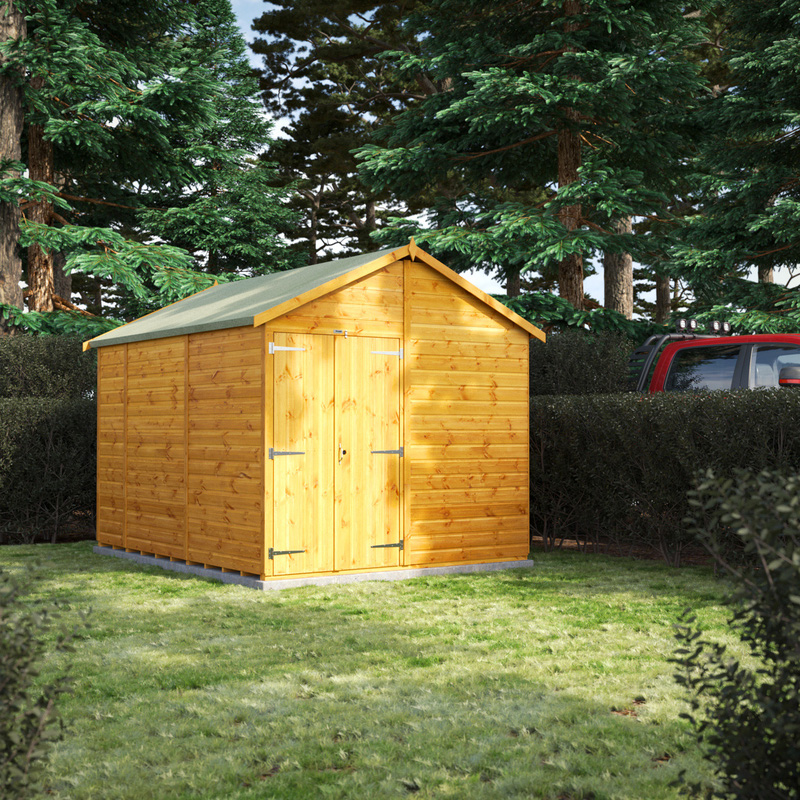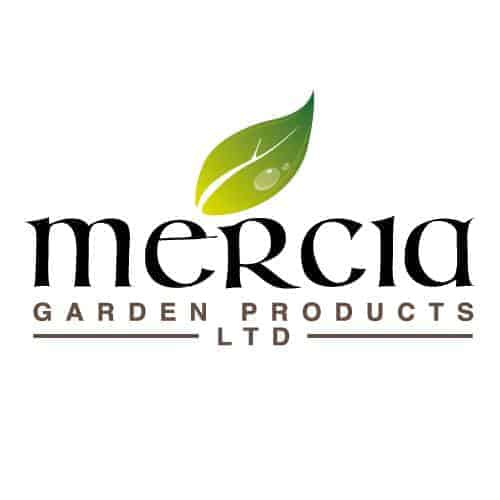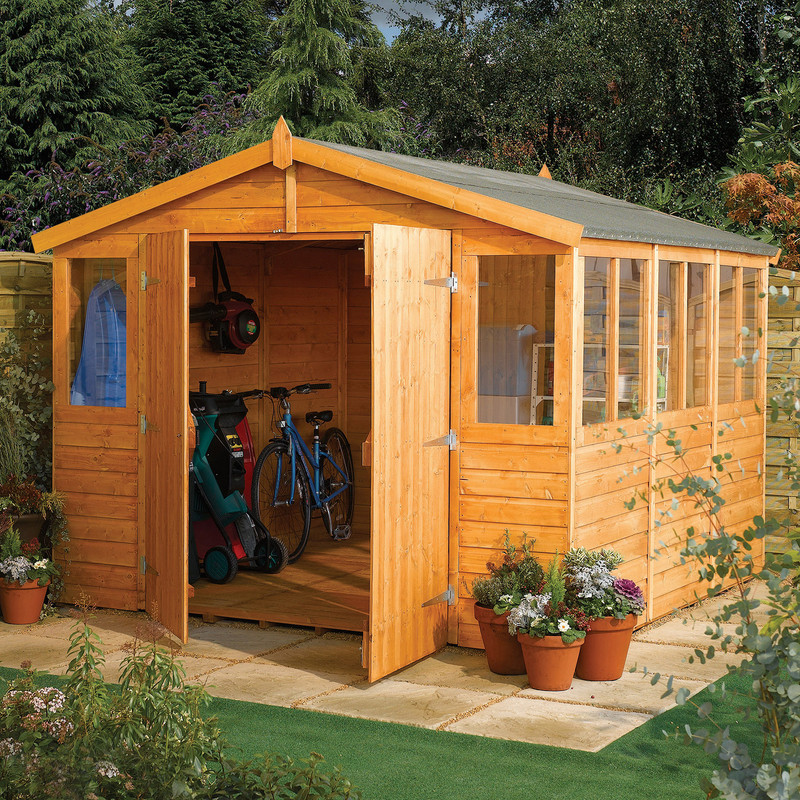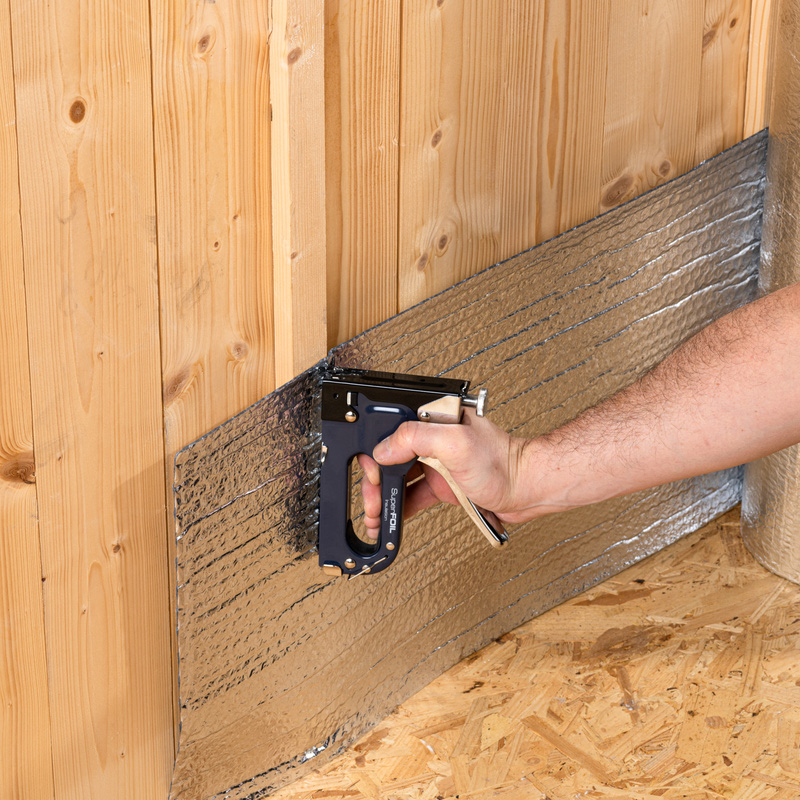When it comes to choosing the perfect shed, with several different types available, there are a few things worth considering. Firstly, what do you plan to use it for? Whether it’s storing garden tools, or using it as a workshop or home office, there’s no shortage of ways in which you can maximise its use.
Before purchasing a shed, consider factors like size, design, material, and overall cost. Make sure there's plenty of room not just for the shed itself, but also around it, so you can easily access all sides for cleaning and maintenance. Cost-wise, don’t just focus on the initial price - think about any additional expenses. If you’re confident in your DIY skills, you might choose to assemble it yourself. Otherwise, hiring a professional for installation could add to the total cost.
In this guide we’ll be covering everything you need to know about the different types of sheds, helping you choose the right one for your garden.
Types of Garden Sheds By Roof Style
When it comes to the roof style of garden sheds, these typically come in three types: apex, pent, and reverse apex.
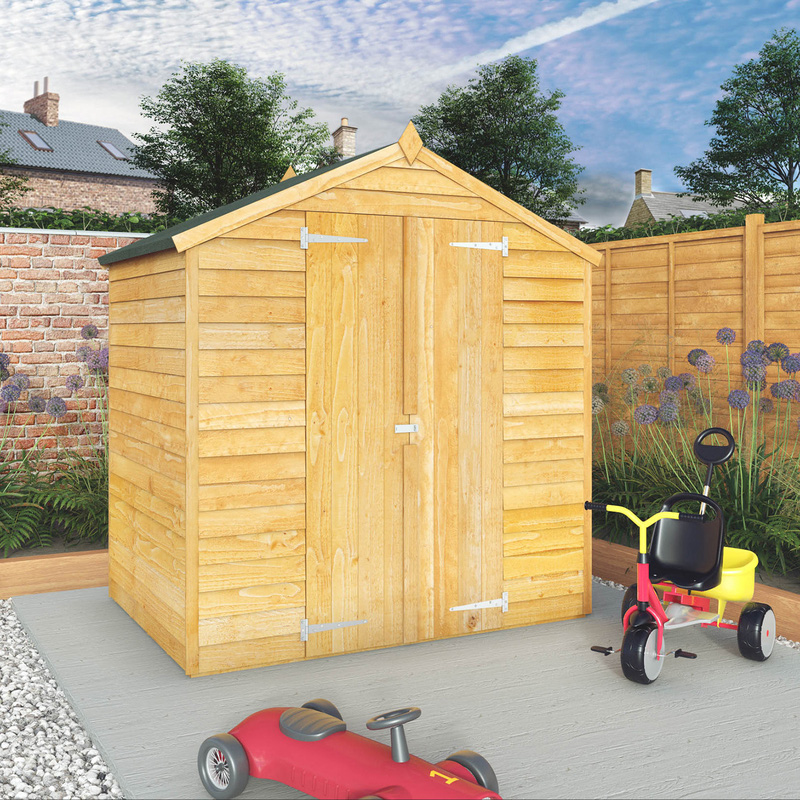
Apex Roof Sheds
An apex shed is one that features a pitched roof which slopes down to either side of the shed walls. This gives you plenty of headspace along the length of the shed and straight down the middle, making it ideal if you plan to use it as a workshop, allowing you to stand comfortably while you work.
Another advantage of the increased headroom is the additional storage space it provides. This can be especially useful when it comes to putting away items such as ladders, grass trimmers and other similar garden tools that often take up lots of room.
As you’d expect, apex roofs allow for excellent water runoff, so in the event of heavy downpours you won’t need to worry about water pooling, which could result in damage later on. That said, if budget is a consideration, it’s worth noting that apex sheds often cost a little more compared to pent roof sheds. But, if you want a traditional aesthetic that suits most outdoor spaces, an apex roof shed can be a great choice.
Advantages
-
Sloped design allows for better rainwater runoff, reducing likelihood of leaks.
-
Central peak provides extra vertical space, ideal for storing a variety of tools.
-
Traditional look that suits most garden spaces.
Things to Consider
-
Can be more expensive due to more complex structure.
-
Peaked roof design could make assembly more difficult.
-
Sloped sides can limit usable wall height for shelves or hanging tools.

Pent Roof Sheds
A pent shed features a single-sloping roof that angles from one side of the shed to the other. It’s a simple design which is a great choice for placing against a wall or fence, allowing you to make the most of smaller garden spaces and in tight corners.
The lower height at the back and higher front can make it more practical due to easier access, especially if you're using the shed primarily for storage. While headroom is generally lower than an apex design, pent roofs still offer enough space for storing taller items like garden tools and shelving units, just be aware of placement.
One of the biggest advantages of a pent shed is its modern, streamlined look. It's also usually more affordable than an apex shed and it’s less complex design can make it easier to assemble. Plus, the angled roof still provides effective rain runoff, though not quite as efficient as an apex shed during very heavy downpours. If you're after a sleek, space-saving solution on a budget, a pent roof shed is definitely worth considering.
Advantages
-
Ideal for smaller gardens and tight spaces
-
Can be cheaper to purchase
-
More modern appearance
Things to Consider
-
Less vertical storage space
-
Rainfall runoff not as effective compared to other shed types
-
Increased potential for water leaks due to roof design
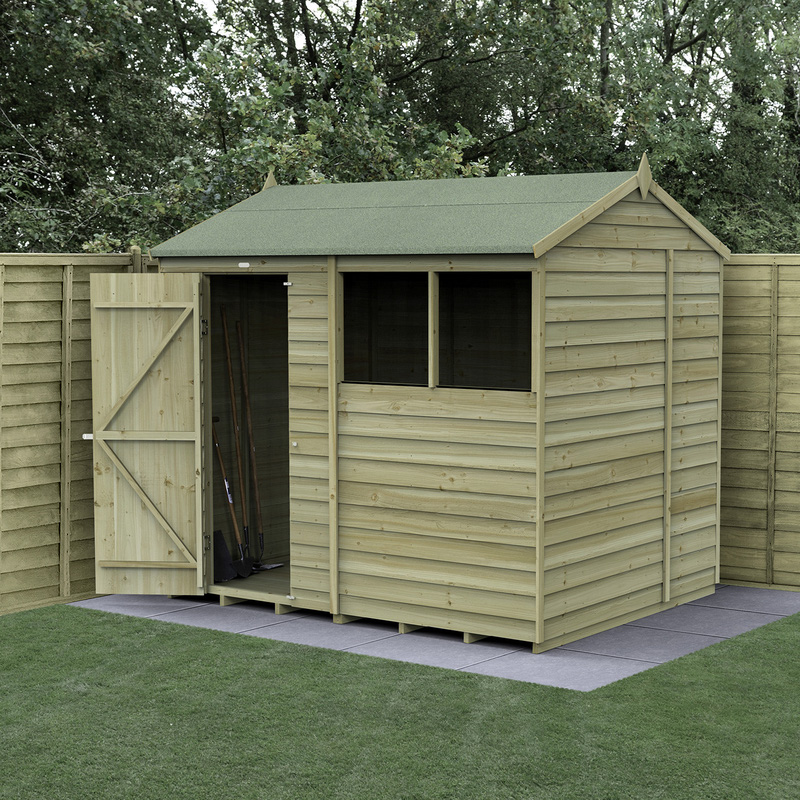
Reverse Apex Sheds
A reverse apex shed features a pitched roof like a traditional apex design, but with the ridge running from side to side rather than front to back. This means the door is usually placed on one of the longer sides, giving you a wider, more open frontage - perfect if you want easier access or plan to use the space for a workshop or hobby room.
The generous width across the front means some models come with double doors, meaning moving larger items in and out is much more convenient. You can also still benefit from good central headroom thanks to the sloping roof, so standing and working inside remains comfortable.
Like standard apex sheds, reverse apex roofs provide excellent water runoff and a traditional look. However, their more complicated design can make them more difficult to install. Their slightly niche design compared to other types of sheds can cost a bit more, but if layout flexibility and accessibility are your priorities, a reverse apex shed could be the ideal choice.
Advantages
-
Good headroom along the length of the shed
-
Better water runoff, reducing the likelihood of water damage
-
Ideal if you have larger storage needs
Things to Consider
-
Roof design may impact usable wall space
-
Could be more complicated to install
Types of Garden Sheds By Material
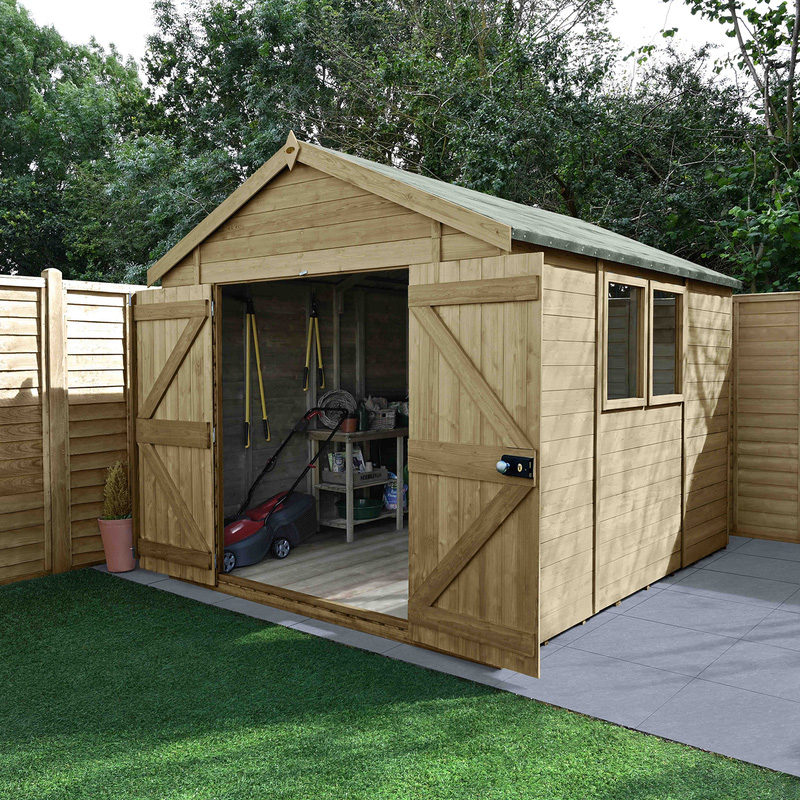
Wooden Sheds
Wooden sheds are the classic choice for garden storage, offering a traditional look that blends naturally with outdoor surroundings. Made from timber panels, they’re strong, customisable, and available in a wide range of styles and sizes.
One of the biggest benefits lies in its flexibility as you can paint your shed, stain, or even add shelves and hooks with ease. In many cases you won’t have to worry about heating your shed as they’re well-insulated compared to other materials, making them a popular option for things like workshops.
Keep in mind that wooden sheds typically need a little more maintenance, such as treating the wood to prevent rot and insect damage. If you want a more traditional style that can be customised with a lick of paint and don’t mind spending a bit of time on upkeep, a wooden shed is a good choice.
Advantages
-
Natural look that suits most gardens.
-
Easy to paint, modify, or add fittings to.
-
Better temperature control for year-round use.
Things to Consider
-
Needs regular treatment to prevent rot and wear.
-
Without proper care, can degrade over time.
-
Typically pricier than plastic alternatives.
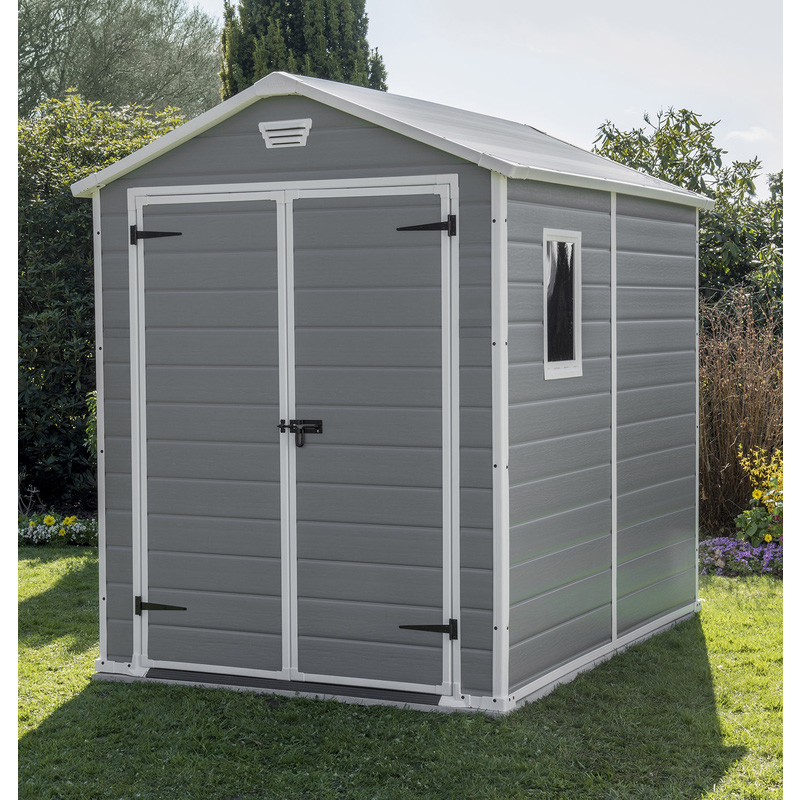
Plastic Sheds
Plastic sheds offer a lightweight, low-maintenance alternative to timber. Made from durable resin or PVC, they’re resistant to weather, rot, rust and insects making them ideal if you want something that’s virtually maintenance-free, as you won’t need to spend any time on painting or applying wood treatments.
Assembly is usually straightforward, and many come in modular kits with the lightweight panels that are easy to handle making for quick installation. While plastic sheds don't have the traditional charm of wooden ones, they often include features like ventilation panels and skylights for added convenience.
It’s important to note that they can be less sturdy in high winds and typically aren't suited for heavy-duty use or if you want something you can customise with shelving, but for basic garden storage, a plastic shed is hard to beat in terms of its practicality.
Advantages
-
Low maintenance with no painting or treating needed.
-
Weather and rot-resistant.
-
Lightweight and easy to assemble, ideal for quick setup.
Things to Consider
-
Can look out of place in more natural garden settings.
-
Harder to modify or add shelving to.
-
Lightweight structure may not suit exposed locations.
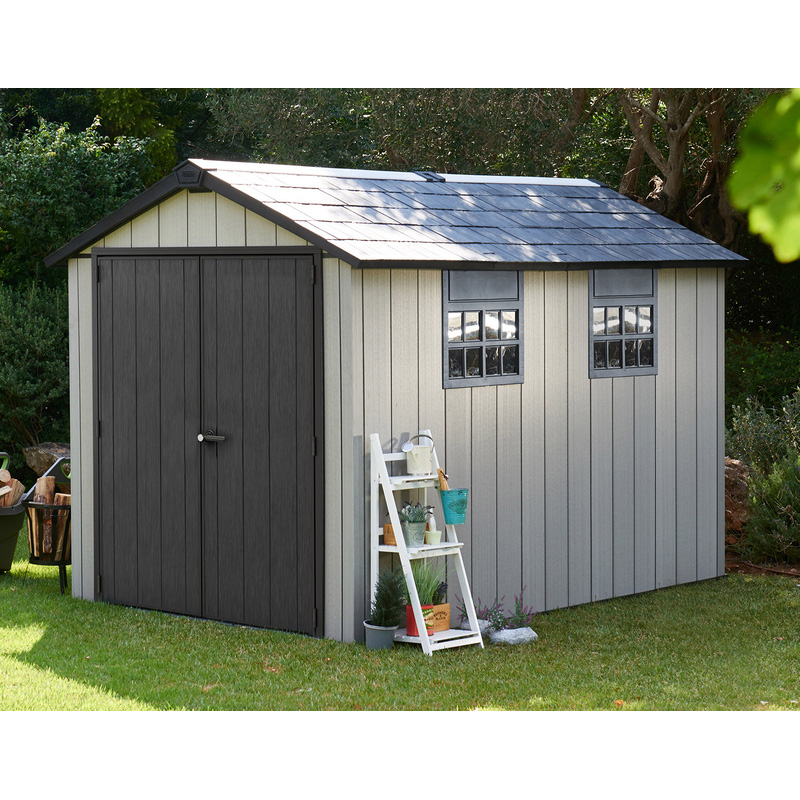
Metal Sheds
Metal sheds are known for their strength and security. They’re usually made from galvanised steel or aluminium ensuring they’re resistant to rust. they’re excellent for storing valuable tools or equipment thanks to their durability and resistance to fire and pests.
They require very little maintenance and hold up well in most weather conditions. However, they can suffer from condensation if not properly ventilated, and they’re not as visually warm or welcoming as wooden sheds.
Assembly can also be more complex, and modifications aren't as straightforward. That said, if security and longevity are your top priorities, a metal shed is a solid investment.
Advantages
-
Highly secure and durable, which is great for protecting expensive tools or equipment.
-
Resistant to fire, pests, and rot, making them low-maintenance.
-
Excellent durability in most climates, increasing their longevity.
Things to Consider
-
Can suffer from condensation if the shed has limited ventilation.
-
Not ideal for interior modifications or adding fittings.
-
Less suited to traditional garden aesthetics with a more industrial look.
Types of Wooden Sheds
Wooden sheds are manufactured from cladding and this varies by style: ship-lap, tongue and groove, and overlap. Each of these takes on a slightly different appearance and also how they fare against adverse weather conditions.
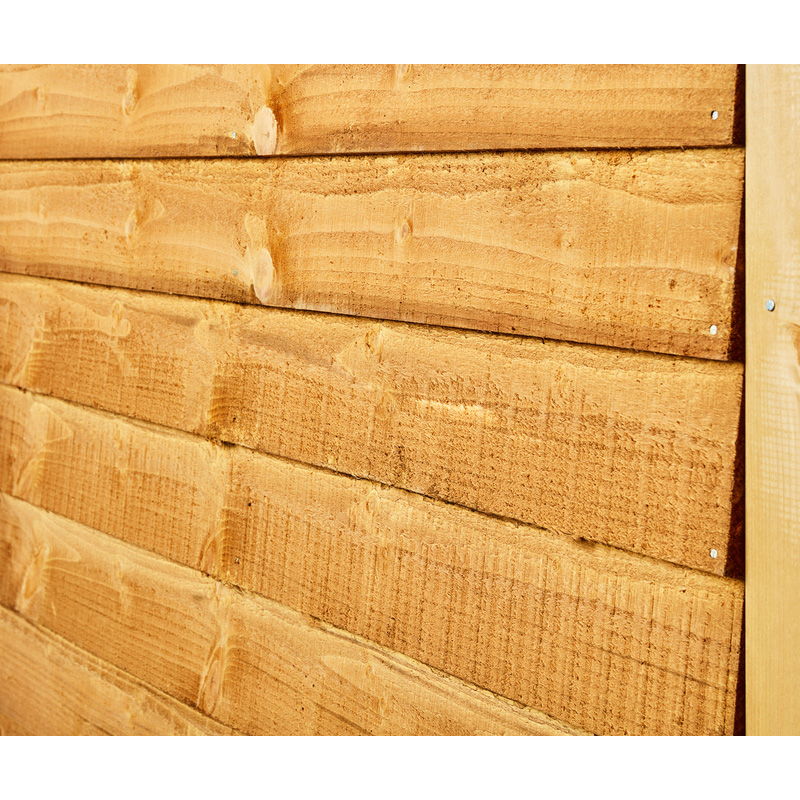
Overlap Shed
An overlap shed is built using horizontal timber boards that slightly overlap each other - hence the name. This simple construction style allows rainwater to run off easily, helping to protect the shed's contents from the elements. Overlap sheds are typically the most affordable type of wooden shed, making them a popular choice for those looking for basic storage without a high price tag.
While overlap sheds offer decent weather resistance, they’re generally less robust than other cladding types. Gaps between boards can widen over time, and the thinner panels aren’t ideal for heavy-duty use. However, if you're after a cost-effective, traditional-looking shed for light garden storage, an overlap shed is a reliable option.
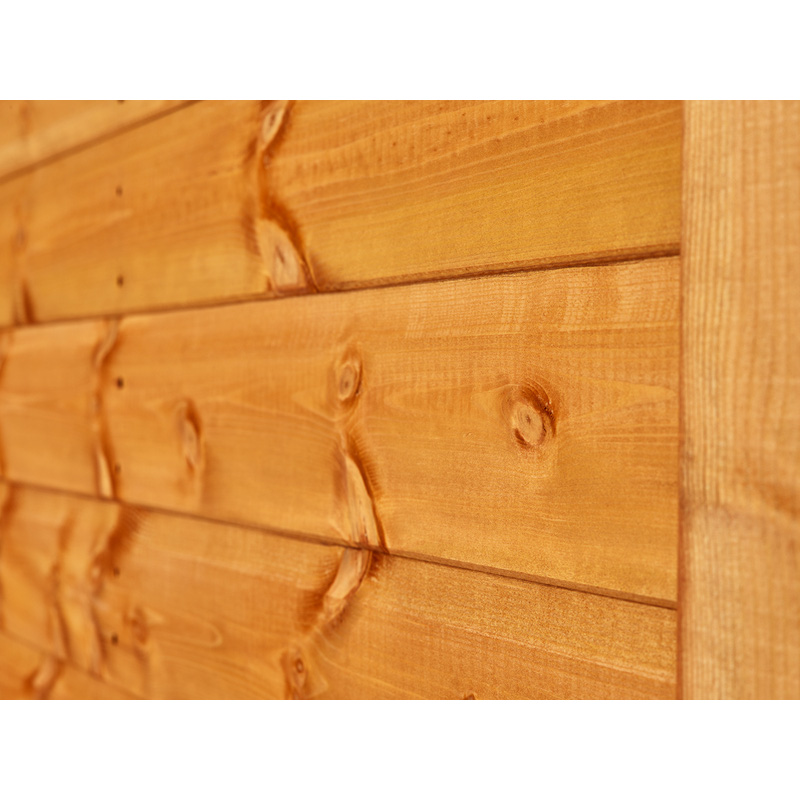
Ship-Lap Shed
A ship-lap shed features horizontal wooden boards like an overlap shed, but with a more refined interlocking profile. Each board fits neatly into the next one with a small groove, which not only strengthens the structure but also gives a tighter seal against wind and rain. This makes ship-lap sheds more weather-resistant and visually smoother compared to basic overlap designs.
Ship-lap sheds strike a better balance between durability and looks. They’re often a little more expensive than overlap sheds but provide additional strength and a less rustic appearance. Ideal for those wanting a shed that looks neat, holds up well in poor weather, and offers better long-term performance, ship-lap is a popular mid-range option.
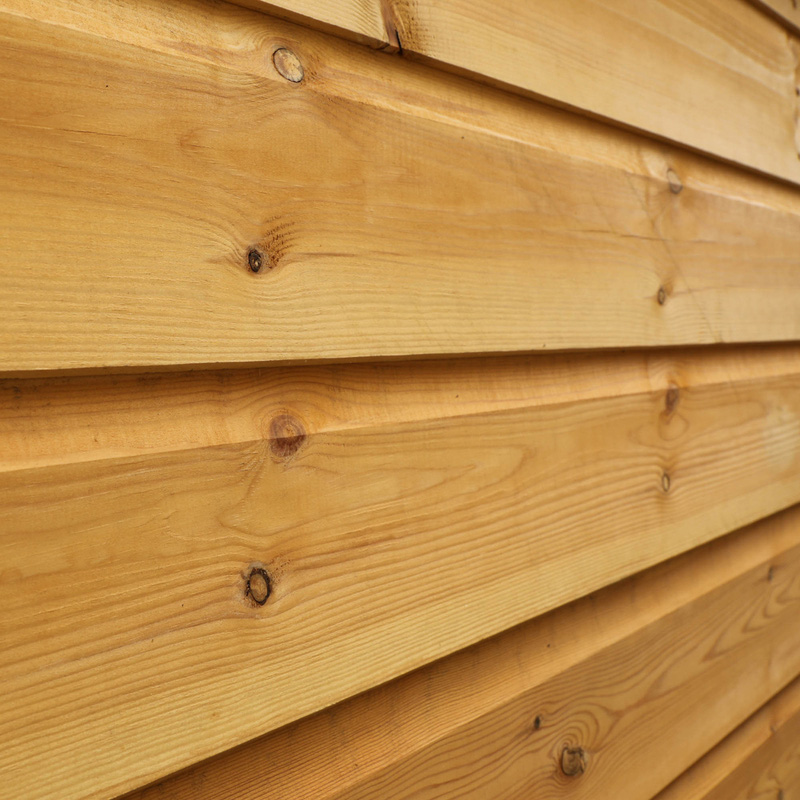
Tongue and Groove Shed
Tongue and groove sheds are constructed using precision-cut timber boards that slot tightly together. One side has a protruding “tongue” and the other a matching “groove.” This creates a strong, interlocked structure with excellent resistance to water ingress and warping, making it one of the most robust cladding types available for wooden sheds and other similar outdoor buildings.
These sheds are typically more expensive but offer superior strength, insulation, and longevity. They’re a great choice if you're looking for a high-quality, solid garden building that can double as a workshop or hobby room. With their neat, smooth finish and durable build, tongue and groove sheds are often considered the premium option when it comes to shed construction.
Things to Consider Before Buying A Shed
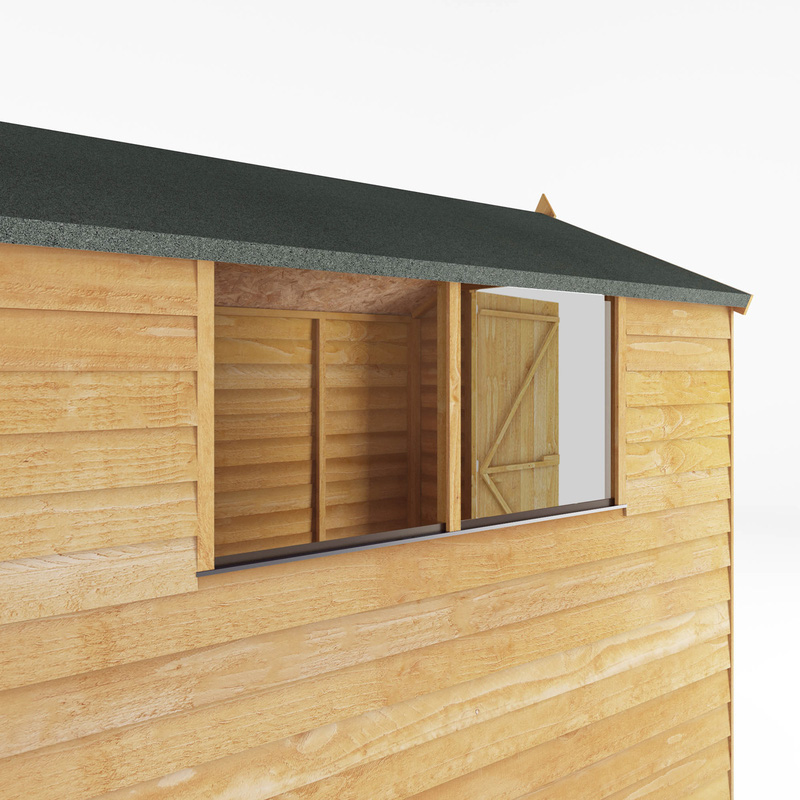
Do you need windows?
Not every shed comes with windows, but when might they come in handy? If you plan to use your shed as a workshop then you’ll benefit from lots of natural light and the ability to improve ventilation and cooling, perfect for hot sunny days. Furthermore, windows can improve the aesthetic of the shed making it look a little more inviting and homely. However, if you’re after a simple storage solution, windows are probably not a priority. In fact, a windowless shed can be more secure and less susceptible to break-ins.
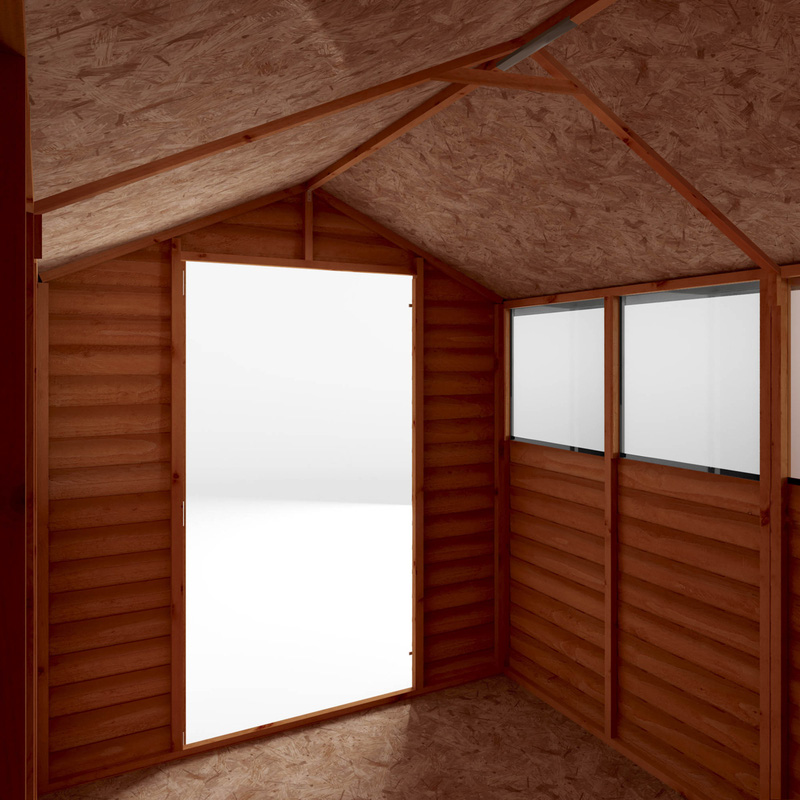
Which roof style do you prefer?
The style of the shed roof isn’t just about appearances. Indeed, the different roof shapes can impact what you can do with your shed. An apex roof or reverse apex roof will give you more headroom, so if you want to store away tall items or spend time in your shed working on DIY projects, this additional space could come in useful. On the other hand, if you want something that has a more contemporary look and is a good space-saving option, a pent roof will be ideal with its compact size and modern style.
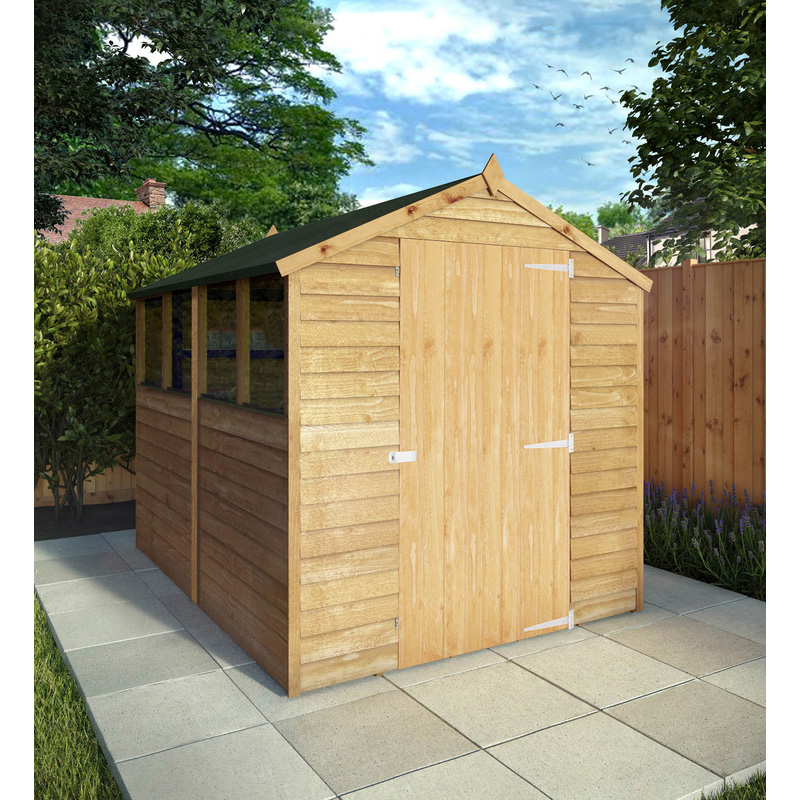
What kind of base will you need?
Many sheds are supplied with their own base, but in the event that a shed base isn’t included you’ll need to consider the best option prior to assembly. It’s not a good idea to install a shed directly onto your lawn or grassed areas due to the potential for instability and water ingress which, over time, can result in damage. You can opt for pouring concrete (ideal for creating a level surface ready for your shed), laying patio slabs, or purchasing a wooden frame.

